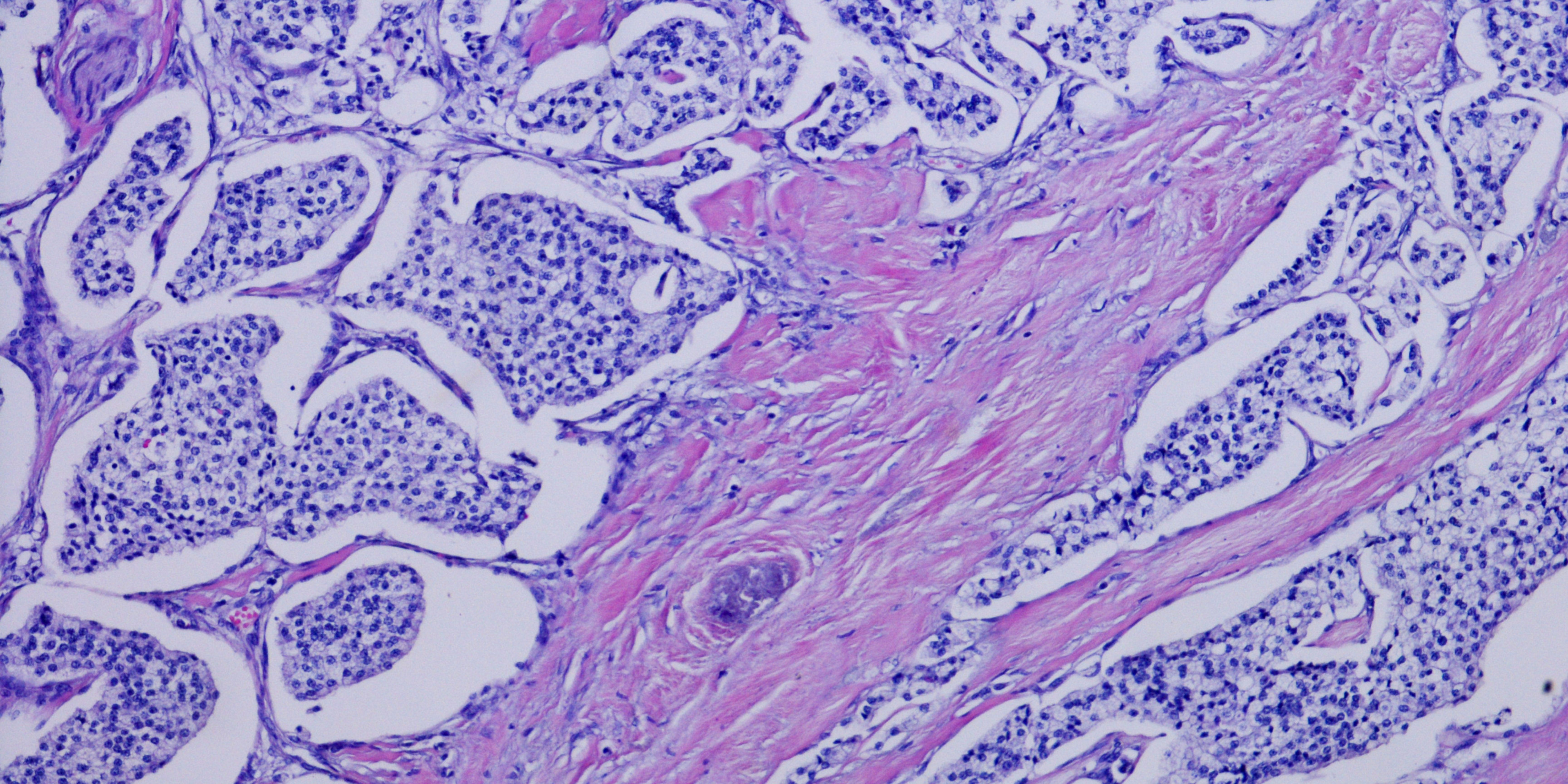Geschreven door Alisa - 3 Minuten leestijd
Novel therapeutic target for neuroendocrine tumors uncovered

Neuroendocrine tumors (NETs) are cancers that begin in specialised cells called neuroendocrine cells. These tumors are rare and can occur anywhere in the body. Most neuroendocrine tumors occur in the lungs, appendix, small intestine, rectum, and pancreas. A new study by the Organoid Group (Hubrecht Institute) and the Rare Cancers Genomics Team (IARC/WHO) demonstrates that some pulmonary NETs need the protein EGF to be able to grow. These types of tumors may therefore be treatable using inhibitors of the EGF receptor.
Their findings were published in Cancer Cell in an article titled, “Druggable Growth Dependencies and Tumor Evolution Analysis in Patient-Derived Organoids of Neuroendocrine Neoplasms from Multiple Body Sites.”
“Neuroendocrine neoplasms (NENs) comprise well-differentiated neuroendocrine tumors (NETs) and poorly differentiated neuroendocrine carcinomas (NECs),” the researchers wrote. “Treatment options for patients with NENs are limited, in part due to lack of accurate models. We establish patient-derived tumor organoids (PDTOs) from pulmonary NETs and derive PDTOs from an understudied subtype of NEC, large cell neuroendocrine carcinoma (LCNEC), arising from multiple body sites.”
NETs are relatively rare tumors that can be slow-growing. However, some NETs can be aggressive and hard to treat. There are very few models to study NETs in the lab, which limits research into this type of tumor.
The researchers from the Organoid Group (Hubrecht Institute) and the Rare Cancers Genomics Team (IARC/WHO) set out to develop new models to study NETs. They derived cells from patients with NETs and were able to culture them into 3D structures called organoids. Their organoids mimic the behaviour of actual NETs and they report they can be used to study this type of tumor in the lab. The new model is the first organoid model of the disease.
“If we inhibit the receptor for EGF, some organoids die. Apparently, these organoids are dependent on EGF for their survival,” said Talya Dayton, PhD, group leader at the Hubrecht Institute and co-first author on the paper. “We need further research to confirm our findings, but this may indicate that patients with EGF-dependent NETs could be treated with inhibitors of the EGF receptor.” Inhibitors of the EGF receptor are already a course of treatment for other types of tumors.
Tumors are usually thought to be independent of growth factors. That some NETs turn out to be dependent on the growth factor EGF is therefore surprising. “We think that their EGF-dependence might explain, in part, why some of these tumors grow slowly. We also think this might mean that one of the ways in which NETs can become aggressive is by becoming growth-factor independent. If they no longer need the growth factor, their growth may accelerate,” Dayton explained.
The newly developed model for NETs provides a new way to study the disease in the lab. Dayton added: “This allows us and other scientists to understand the biology of these tumors so we can hopefully find effective therapies.” Although further research is needed, the model paves a new path of treatment for patients with pulmonary NETs.
Interested in the dynamic Biotechnology Industry? Let our experts guide your career. Explore how we can help you today! Discover the possibilities here.
Also published on Genengnews.com
Want to stay informed about current Life Science and recruitment news on a regular base? Then register here for free.
